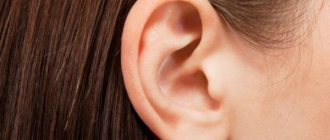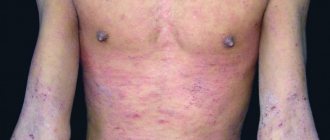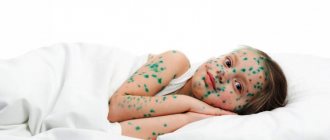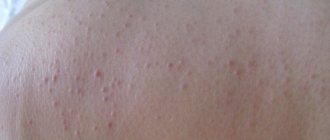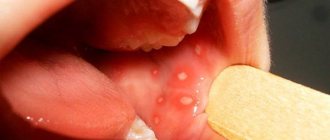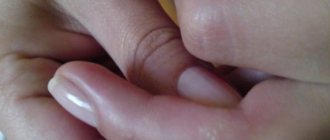A rash on the knees in adults and children can occur as a result of various provoking factors. The lesion can be of several types, of different sizes, and is accompanied by corresponding symptoms.
At the first manifestations, it is recommended to immediately seek professional help from a dermatologist, who, after examination and diagnosis, will prescribe comprehensive treatment.
Causes of itchy rash under the knees in adults
Hives
This is a rash that can appear suddenly, seemingly out of nowhere, and can quickly spread to the area behind the knees, elbows, and legs. This rash is most common on the elbows and knees, but can also occur anywhere on the extremities. and rarely very much on the face.
A very characteristic feature of the urticaria rash under the knees is that each time its presence on the skin is very often accompanied by constant itching and itching. The rash can be quite small in a single form, or even very large in a small rash grouped together.
A hives rash is also not always accompanied by itching. It can be caused by an existing allergic reaction to various things, including food, medications, external irritants such as soap, detergent, clothing or food.
Eczema
Eczema is a condition caused by two factors: first, a genetic tendency towards dry, irritated skin; and secondly, skin allergies to various irritants and products. Eczema has two different types. When this rash is mild, it appears as flat, dry white patches. During flare-ups, it appears as red, irritated, raised spots, similar to pimples.
This rash typically occurs behind the knees, on the inner elbows, and behind the knees in both adults and children. In older people, this rash usually affects the front of the knees and the outside of the elbows. The rash can also appear on the face, arms, and legs. Eczema can be a short-lived rash. and a temporary reaction to something in your environment, or it may be a chronic condition that lasts for years. Diagnosis and treatment of eczema are extremely important. The standard treatment is the use of hydrocortisone cream.
Treatment of an allergic reaction
Before starting treatment, it is necessary to find out the reasons: why the back of the knees is itchy and red.
Having identified the allergen, conditions are created aimed at removing it from the patient.
Successful treatment of allergies requires an accurate diagnosis. Treatment of allergic rashes will differ from getting rid of skin diseases: psoriasis, eczema, mycosis. Rashes due to infectious diseases have their own treatment methods.
Drug therapy
For allergic rashes, antihistamines are prescribed, which relieve the negative manifestations of the disease.
Take internally:
- Tavegil, Suprastin;
- Zyrtec, Claritin;
- Telfast, Levocetirizine (L-cet).
Levocetirizine is a third-generation drug, highly effective, fast-acting, and easy to use (1 tablet per day is enough). Available in tablets and syrup. It is not recommended for children under 6 years of age.
If a child has allergies, Suprastin or Tavegil is most often prescribed in the following doses:
| Name | Up to 1 year | Up to 3 years | Up to 7 years | After 10 years |
| Tavegil Suprastin | 1/4 tablet | 1/3 tablet | 1/2 tablet | Whole |
In severe cases, hormonal corticosteroids are prescribed: Prednisone, Kenalog.
Immunomodulators are used to activate the body’s defense mechanisms and to prevent recurrent allergies:
- Imunofan, Viferon;
- Lykopid, Timolin;
- Derinat (drops).
Attention! Immunomodulators are not prescribed to infants under 3 years of age. In severe cases, use the mild stimulant Thymogen under the direct supervision of a physician.
To treat rashes on the elbows and knees, ointments, creams, sprays, and gels are used.
Their action lies in several directions:
- anti-inflammatory;
- antiseptic;
- eliminating itching, pain, irritation;
- healing ulcerations and cracks;
- moisturizing and softening;
- removing swelling.
Liniments are either corticosteroid (hormonal) or non-hormonal.
Hormonal:
- Elokom;
- Advantan;
- Fluorocort.
Non-hormonal ointments: Elidel, Skin-kan (made with zinc, has antipruritic, anti-inflammatory effects, removes dryness).
Children are offered to use Drapolen cream, which has an antiseptic and anti-inflammatory effect. Itching under the knees is relieved with cool compresses.
Ointments with analgesic and anti-inflammatory effects provide good results:
- Panthenol;
- Fenistal-gel;
- Desitin;
- Lanolin;
- Bepanten (promotes healing).
In severe cases, hormonal ointments are used:
- Momat;
- Sinaflan;
- Prednisolone;
- Hydrocortisone.
For allergies to cold - cold allergy and dry skin, moisturizing creams help well.
You can lubricate children's acne with Glyciram ointment, made on a plant basis from licorice. But it should not be abused, since licorice contains atropine.
To remove toxins, give activated charcoal 2 times a day.
Children need to adhere to the following doses:
- up to 1 year – 1 tablet;
- up to 3 years – 2 tablets;
- up to 7 years – 3 tablets.
It is recommended to follow a special diet.
Limit:
- sweets, spicy, salty;
- smoked, preservatives;
- dyes, canned food.
Particularly allergenic products are prohibited:
- chicken eggs;
- milk, cocoa;
- nuts, honey;
- citrus.
You should use the following measures to limit yourself from exposure to the allergen:
- wearing masks, working with gloves;
- avoiding contact with household chemicals;
- wearing clothes made of simple fabrics;
- ban on synthetics, wear everything natural.
Video from Dr. Komarovsky:
Viral rash under the knees in adults
Poll: When did your acne appear? (Number of votes: 4295)
I've been suffering all my life
It's been a couple of years now
About a few months
Recently
To vote, click on the desired answer. results
The most common rash that appears suddenly anywhere on the body including the knees is a rash due to various viruses. Some viruses can be easily identified, including chickenpox or rozola. Most viruses, however, do not cause their own type of rash, like chickenpox.
These typical viral rashes can have many different appearances, such as lacy or pimply, raised or flat pimples, bumps or spots, and they often (but not always) start on the stomach and then spread to the extremities, including rashes under the knees and on the legs The most important distinguishing symptom of such a rash is the appearance of elevated body temperature from the influence of a viral infection inside the body.
Here is a brief description of some of the diseases identified by a viral rash:
Chickenpox
If you did not have chickenpox as a child, then it may well be that a rash under the knees is its first symptoms, starting with a few red spots or bumps (often mistaken for insect bites). Also, the rash in adult chickenpox is accompanied by an elevated temperature. The next day, even more will appear bumps, and the first bumps will turn into blisters On the third day, new bumps will appear, and the bumps on the second day will begin to blister On the 4th day, the initial blisters will begin to writhe Usually by the 5th day, new inflammation of the rash does not appear, and large blisters of the rash begin to crust over By day 7, most or all of the rash blisters under the knees and other areas of the skin will have crusted over. The elevated body temperature may persist for 5 days.
Fifth disease (or Slapped Cheek disease)
This is a very common virus. It begins by causing a bright red rash that looks like you hit yourself somewhere, and sometimes such a rash in adults is accompanied by a body temperature of up to +39 degrees. The rash spreads from the torso to the extremities, starting from the knees and elbows Also with this virus there may be a runny nose and cough.
Rubella
This is one of the most common causes of fever and rash in babies and young children. It starts with three days of moderate to high fever, with no other symptoms. When you start to worry, the fever goes away on the fourth day and your baby develops a rash that covers body almost entirely The rash consists of red spots and bumps starting on the upper back and neck, spreading down the trunk and into the limb. Sometimes it has a lacy appearance. If this sounds like your baby, click on it for more information.
Insect bites
This is a very common cause of a rash under the knees or other area of skin in both adults and children, even if you do not have pets and regularly infest your home with bugs and insects. If you develop several (usually less than 20) red bumps rash with a visible pinhole in the middle, then it is probably an insect, most often bedbug bites, which can live in your furniture.
Two types of contact rash on knees in adults
There are two types of contact rash on the knees in adults:
The first type looks red, raised by a bump or spots and may have a small hard surface. It very often causes a lot of itching. They can also form as a line on the skin in the scratched area. This is often initially limited to one or two small areas of the body, but can then spread throughout body over the next few days This is caused by contact with an irritant such as poison ivy, other plants, cleaning products or other chemicals Note the red raised patch with a crisp drainage in the middle Note the straight lines of the rash due to scratching and spreading of the poison This type of rash is treated with over-the-counter hydrocortisone 1%, calamine lotion, and benadryl liquid for severe itching. Strong salicylic acid creams may be used if necessary.
You can prevent this type of rash by applying lotion to the skin behind the knees and other areas of the body, washing the skin after returning home with a special lotion available at most beauty stores. One such brand that should work for removing rashes and redness under the knees is stopproblem Alcohol Free Salicylic Lotion!
The second type of contact rash is more generalized throughout the body, much like the common viral rashes discussed above. The rash occurs as small, red bumps or small spots. It can be caused by a wide variety of irritants, such as synthetic or tight clothing, soaps, shampoos, bubble baths, detergents or fabric softeners, tanning or other lotions, sheets, allergies to certain foods, chlorine pools or anything else that comes into contact with your skin.
Heat rash
It looks like tiny red bumps, bumps or spots. They usually appear on the back of the neck or lower back, as well as in the area and behind the knees. They can further spread to the areas of the legs and arms. This occurs due to a combination of sweat, heat and clothing This rash in adults can be treated by applying cooling compresses to the skin, applying them at least 5 times a day.
Impetigo
It is a bacterial infection of the skin that can occur anywhere but is most often found around the mouth and nose, but its appearance can also be seen on the legs, especially in adults, in the area behind the knees. The rash appears as red, raised bumps or spots with honey bark rashes on the surface of the skin. The disease is treated with antibiotic therapy according to a doctor's prescription.
Is it possible to quickly freeze and cure acne with liquid nitrogen?
Ringworm
It appears as a red, raised ring with almost normal skin in the middle Itching is widespread There can be any number of these rings, from one to ten or more It is caused by a fungus It is spread from other infected animals or people A general rash of thin red bumps may appear elsewhere on the body is an allergic reaction to a fungus that causes a rash. Treatment is over-the-counter Lotrimin AF (clotrimazole) twice daily for several weeks or until clear. See our article on Ringworm for more detailed discussion and photos.
Sinaflan ointment for acne
Main symptoms of an allergic rash
Signs of allergies under the knees will be affected by:
- sensitive and delicate skin of this area;
- possibility of sweating;
- the presence of constant contact with the fabric of clothing or household items when sitting.
The main symptoms of any allergic rash:
- swelling;
- hyperemia;
- itching
The nature of the rash can be very different, ranging from red spots to slight redness, from blisters to swelling and pimples.
The rashes themselves come in the form of small pimples, and sometimes occupy large spaces on the bend under the knee. When scratching or irritation by clothing, there is a risk of infection entering the wound.
Certain precursors of allergic rashes have been observed in children. This is particularly dry skin, minor peeling and redness.
The picture of the disease has its own development:
- First, the skin under the knees turns red, causing discomfort.
- Then swelling appears and small blisters form, which cause severe itching under the knees.
- Then the bubbles burst and merge into a single wet surface, which becomes covered with crusts.
- The area of redness may expand and the overall appearance is "red knees".
The pimples itch on the inside and where they come into contact with clothing.
With a cold allergy, white bumps form against the background of redness, which after a while turn completely red and itch very much. In small children, this process occurs quickly, and the temperature at the site of the rash rises. Crusts appear within half an hour.
Attention! Any changes in the child’s skin are immediately shown to the pediatrician.
Video about allergies:
When do you need to see a doctor urgently?
In general, most viral diseases are contagious from the day the rash appears until the end of treatment for the disease, with the only exception being the chickenpox rash.
The above factors and causes of the appearance and development of the rash, as we see, are not mild in any category of disease. All of the above diseases and types of rash in 90% of cases are the cause of the appearance of a rash under the knees in adults. All these diseases are dangerous, and if in time, In the early stages, if you do not begin to treat the rash by consulting a doctor, then the treatment may later become much more complicated and obviously take longer, bringing unpredictable complications to the skin!
How to treat a rash
Naturally, a rash on the knees needs timely and proper treatment. In case of allergic dermatitis, contact with the active allergen (which, first of all, is detected) must be excluded. It is possible to prescribe the correct diet and follow a normal regimen. For example, doctors do not recommend consuming foods containing nickel.
For dry skin on the feet, salicylic Vaseline is usually prescribed, which is applied to the feet three times a day. In case of swelling, you will need lotions, as well as special baths made with boric acid. Antihistamines, such as Telfast, Zyrtec, Suprastin, and so on, can also be used during therapeutic procedures. It should be noted that hormonal ointments that act locally are often used.
Common symptoms and manipulations in dermatology:
- Skin rashes
- Calling a dermatologist to your home
- Itching in the urethra
- Itchy skin
- Skin rash
- Prevention of casual sex
- Skin neoplasms
- Pyoderma
- Pityriasis rosea
- Streptoderma
- Scabies
- Peeling skin
- Fungal infections
- Skin infection
- Pus on the skin
- Blisters on the skin
- Papillomas on the foreskin
- Sexually transmitted diseases
- Skin structure
